
Worcester, England
by W. Ruth Kozak
 The picturesque city of Worcester in Worcestershire, the West Midlands of England, is a modern city with a fascinating past. From its early begins as a Roman fort on the River Severn in the first century, down through the ages Worcester has been noted as an important centre of British history, known as ‘the place where Liberty was fought’.
The picturesque city of Worcester in Worcestershire, the West Midlands of England, is a modern city with a fascinating past. From its early begins as a Roman fort on the River Severn in the first century, down through the ages Worcester has been noted as an important centre of British history, known as ‘the place where Liberty was fought’.
The English Civil War began in Worcester with a skirmish at the Powick Bridge on the edge of the modern-day city and ended nine years later, in 1651, with the Battle of Worcester. After attempting to regain the crown by force, the Royalist King Charles 1l fled Oliver Cromwell’s Parliamentarian troops and hid out in a house now known as King Charles house in Worcester’s Cornmarket. He later escaped through St. Martin’s Gate, and fled to France. Because of its support of the king during the war, Worcester came to be known as “The Faithful City” (Fideles Civitas), a motto which is part of the city’s coat of arms.
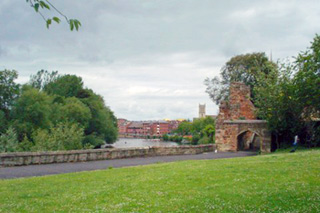 I’ve visited Worcester on several occasions and always enjoy touring around the town. It’s a fairly easy walk to see most of the sights. The city still retains many historical buildings. The Greyfriars, a merchant’s house on Friar Street, is a beautiful timber panel house dating from 1480. The gracious Queen Anne style Guild Hall on High Street was designed by Thomas White, a student of Christopher Wren. There are some exhibits inside. And at the Commandery, which has functioned as everything from a hospital to a military headquarters for King Charles, you can take an audio tour focusing on the Civil War history. On one of my visit to Worcester I went to the Royal Worcester Porcelain museum where I purchased some samples of this fine china. Worcester is also the home of the Lea and Perrins factory where traditional Worcestershire Sauce is made. Be sure and stop at one city’s of the very old Tudor-style pubs to refresh yourself!
I’ve visited Worcester on several occasions and always enjoy touring around the town. It’s a fairly easy walk to see most of the sights. The city still retains many historical buildings. The Greyfriars, a merchant’s house on Friar Street, is a beautiful timber panel house dating from 1480. The gracious Queen Anne style Guild Hall on High Street was designed by Thomas White, a student of Christopher Wren. There are some exhibits inside. And at the Commandery, which has functioned as everything from a hospital to a military headquarters for King Charles, you can take an audio tour focusing on the Civil War history. On one of my visit to Worcester I went to the Royal Worcester Porcelain museum where I purchased some samples of this fine china. Worcester is also the home of the Lea and Perrins factory where traditional Worcestershire Sauce is made. Be sure and stop at one city’s of the very old Tudor-style pubs to refresh yourself!
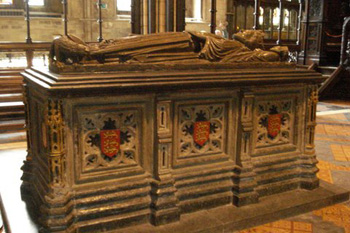 The grandest architectural landmark in Worcester is the imposing Worcester Cathedral which had its beginnings in 1084. Located on the banks of the River Severn, its spires dominate the skyline of the city. The mediaeval cloisters of the cathedral are among the most remarkable in England. The cathedral has the distinction of having the tomb of King John who is most famous for agreeing to the Magna Carta. During his reign from 1199, he controlled an empire that stretched from the south of France through regions of England, Wales and Ireland. When he died in 1216, he requested to be buried at Worcester. The cathedral also has a memorial to Prince Arthur, the young prince Arthur Tudor whose younger brother was Henry VIII. Because of his chancery in the cathedral, Worcester was spared destruction by Henry during the English Reformation.
The grandest architectural landmark in Worcester is the imposing Worcester Cathedral which had its beginnings in 1084. Located on the banks of the River Severn, its spires dominate the skyline of the city. The mediaeval cloisters of the cathedral are among the most remarkable in England. The cathedral has the distinction of having the tomb of King John who is most famous for agreeing to the Magna Carta. During his reign from 1199, he controlled an empire that stretched from the south of France through regions of England, Wales and Ireland. When he died in 1216, he requested to be buried at Worcester. The cathedral also has a memorial to Prince Arthur, the young prince Arthur Tudor whose younger brother was Henry VIII. Because of his chancery in the cathedral, Worcester was spared destruction by Henry during the English Reformation.
It’s a thrill to wander the vast Gothic apse of the cathedral. The composer Edward Elgar spent most of his life in Worcestershire and there’s a stained glass window containing his portrait to commemorate him. Allow yourself plenty of time to explore, including the Norman crypt and unique chapter house. The church represents various styles of English architecture from Norman to Perpendicular Gothic. I’ve had the privilege of being shown around the cathedral several times and browsed in the gardens with my cousin who is one of the cathedral’s chief gardeners. There’s a gargoyle high up on one of the towers that was made to commemorate his years of service at the cathedral.
If You Go:
There are other places of interest to visit near Worcester including the Cotswolds, Warwick Castle and Stratford-Upon-Avon.
For tours of the city and area:
Worcester Tourist Information & Travel Guide
City of Worcester
Worcester Cathedral
About the author:
Ruth Kozak is a frequent visitor to England and has visited Worcester on many occasions. She’s the former editor/publisher of TRAVEL THRU HISTORY, a member of the BC Travel Writer’s Association and a writing instructor in Vancouver B.C. Visit her website at: www.ruthkozak.com
All photos are by W. Ruth Kozak
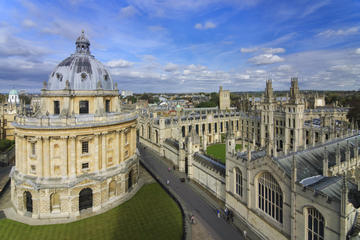


 Arkwright was born into the world in 1732. When his mother looked upon her new-born child, it’s unlikely she thought, “My son’s going to change the face of Britain forever,” but this is exactly what Richard Arkwright did. Because of him, the countless small-scale cottage industries that criss-crossed the British countryside largely disappeared to be replaced by huge factories that sprang up in villages, towns and cities across the land.
Arkwright was born into the world in 1732. When his mother looked upon her new-born child, it’s unlikely she thought, “My son’s going to change the face of Britain forever,” but this is exactly what Richard Arkwright did. Because of him, the countless small-scale cottage industries that criss-crossed the British countryside largely disappeared to be replaced by huge factories that sprang up in villages, towns and cities across the land. Arkwright: opportunist, designer, engineer, entrepreneur, ruthless negotiator, business magpie and self-made man, developed among other things: the spinning frame, the water frame and carding engine. He established the great mills that still line Britain’s waterways. And although some mills existed before Arkwright came to the fore, it was Arkwright who created the modern factory – a hundred years before Henry Ford was born. He is the father of the Industrial Revolution.
Arkwright: opportunist, designer, engineer, entrepreneur, ruthless negotiator, business magpie and self-made man, developed among other things: the spinning frame, the water frame and carding engine. He established the great mills that still line Britain’s waterways. And although some mills existed before Arkwright came to the fore, it was Arkwright who created the modern factory – a hundred years before Henry Ford was born. He is the father of the Industrial Revolution.
 His employees were fiercely loyal to Arkwright. After all he provided them with money, homes, even a week’s holiday (as long as they didn’t leave the village). He also refused to employ children under the age of seven. But he was a strict and fearsome autocrat; a man of his times.
His employees were fiercely loyal to Arkwright. After all he provided them with money, homes, even a week’s holiday (as long as they didn’t leave the village). He also refused to employ children under the age of seven. But he was a strict and fearsome autocrat; a man of his times. Across the valley from Masson Mill (now a shopping outlet housing a small Arkwright museum), you can see Willersley Castle. Arkwright tiring of the gloomy Rock house situated in a narrow, shady valley, bought a large tract of land from Florence Nightingale’s family and set out to build an elegant mansion on the sunny side of the valley. However, as luck would have it, the house burnt down on completion and Arkwright had to wait a further two years before the rebuilt house was complete. But fate was to conspire against him and poor Arkwright died before he could ever move in.
Across the valley from Masson Mill (now a shopping outlet housing a small Arkwright museum), you can see Willersley Castle. Arkwright tiring of the gloomy Rock house situated in a narrow, shady valley, bought a large tract of land from Florence Nightingale’s family and set out to build an elegant mansion on the sunny side of the valley. However, as luck would have it, the house burnt down on completion and Arkwright had to wait a further two years before the rebuilt house was complete. But fate was to conspire against him and poor Arkwright died before he could ever move in. Few venture here, yet it’s a place of strange decaying beauty. The first mill was built here in the 1600s. By the height of the Industrial Revolution, there were at least seven mills crammed into this narrow dale. Arkwright, of course, was at the centre of Lumsdale’s expansion.
Few venture here, yet it’s a place of strange decaying beauty. The first mill was built here in the 1600s. By the height of the Industrial Revolution, there were at least seven mills crammed into this narrow dale. Arkwright, of course, was at the centre of Lumsdale’s expansion.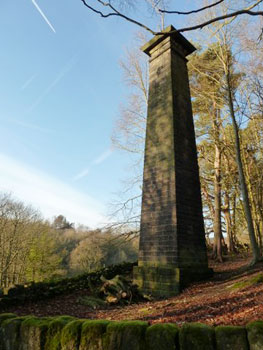 Climbing high above the dale, I look down at the waterfall that spills a hundred feet. Transparent pebbles of water bounce into the air. Below, the stream is bracken-brown. At the water’s edge, great green and russet slabs of stone sculpt the valley, like heavy, angular communist monuments.
Climbing high above the dale, I look down at the waterfall that spills a hundred feet. Transparent pebbles of water bounce into the air. Below, the stream is bracken-brown. At the water’s edge, great green and russet slabs of stone sculpt the valley, like heavy, angular communist monuments.
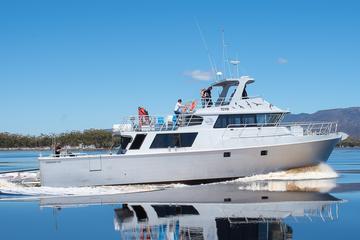
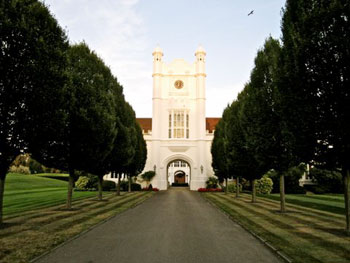
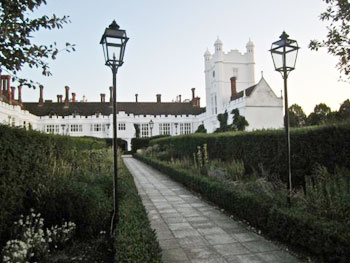 We are a bit early and have a chance to amble round the gardens. Pebble pathways weave like a labyrinth through trimmed hedges in varying shades of green. A fountain sits in the center with a cherub standing on top and the soft sound of trickling water. We watch a bride and groom looking out over the cliff, down to the River Thames. His arm wraps around her slender waist over the buttons elegantly running down the back of her lace dress. Their guests photograph them as they laugh and kiss in the late afternoon sun.
We are a bit early and have a chance to amble round the gardens. Pebble pathways weave like a labyrinth through trimmed hedges in varying shades of green. A fountain sits in the center with a cherub standing on top and the soft sound of trickling water. We watch a bride and groom looking out over the cliff, down to the River Thames. His arm wraps around her slender waist over the buttons elegantly running down the back of her lace dress. Their guests photograph them as they laugh and kiss in the late afternoon sun.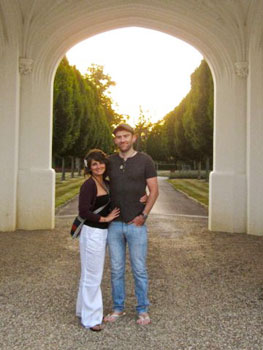 We sit back in our sleek armchairs and people watch through the windows. Our separate teapots arrive along with sugar cubes and milk in a sterling silver pitcher. I lift my teapot and pour it into my cup. The tealeaves come pouring out with it. I look over the table at Stonie, sheepishly, and see that he has made the same mistake.
We sit back in our sleek armchairs and people watch through the windows. Our separate teapots arrive along with sugar cubes and milk in a sterling silver pitcher. I lift my teapot and pour it into my cup. The tealeaves come pouring out with it. I look over the table at Stonie, sheepishly, and see that he has made the same mistake. We start on the sandwiches. They’re thinly spread with different fillings, like hummus, roast beef, and egg mayo. Frankly, I am not impressed. They’re made with commercially packaged bread, crusts are cut off and only about 1/3 of the slice is used. I wonder what they do with the rest of the sandwich. If I’m going to pay £21 for sandwiches, I would like fresh bakery-worthy bread, not the Wonder bread my mom used for bologna sandwiches in my school sack lunch. However, this is traditional afternoon tea, and that’s the way the sandwiches are made. Besides, I’m hungry.
We start on the sandwiches. They’re thinly spread with different fillings, like hummus, roast beef, and egg mayo. Frankly, I am not impressed. They’re made with commercially packaged bread, crusts are cut off and only about 1/3 of the slice is used. I wonder what they do with the rest of the sandwich. If I’m going to pay £21 for sandwiches, I would like fresh bakery-worthy bread, not the Wonder bread my mom used for bologna sandwiches in my school sack lunch. However, this is traditional afternoon tea, and that’s the way the sandwiches are made. Besides, I’m hungry.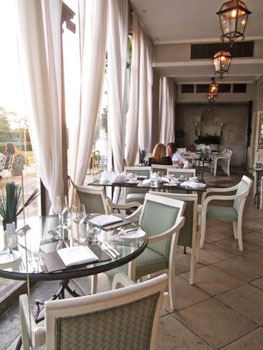 I cut a raisin scone in half and spread the jam first, then the cream. It’s so thick, I use my finger to scrape it off the spoon and lick my finger clean. Not the best manners, I’m aware, but we’ve already broken so many other rules of etiquette.
I cut a raisin scone in half and spread the jam first, then the cream. It’s so thick, I use my finger to scrape it off the spoon and lick my finger clean. Not the best manners, I’m aware, but we’ve already broken so many other rules of etiquette.

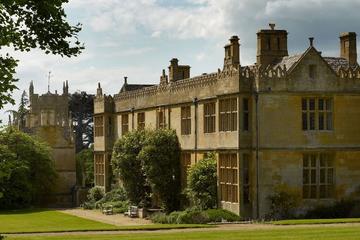
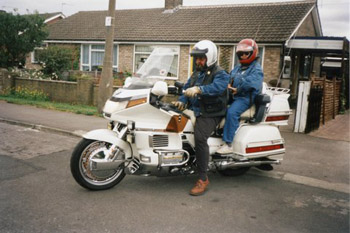
 As my knight in shining armour parked the pearl white Honda Goldwing in front of Chawton Cottage, he said, “Take your time. I’m going for a tea.” He pointed at Cassandra’s Tea Shop across the road.
As my knight in shining armour parked the pearl white Honda Goldwing in front of Chawton Cottage, he said, “Take your time. I’m going for a tea.” He pointed at Cassandra’s Tea Shop across the road.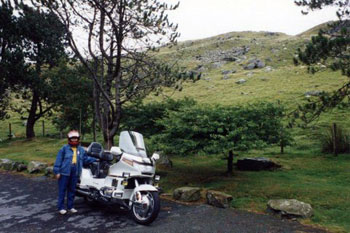 There I stood in Jane’s house, a gift from her brother which she shared with her mother and her sister Cassandra; the place she wrote most of her work. I entered the parlour and gingerly touched the little round table she wrote on. Prickles ran up and down my arms. I had seen some of her original writing at the British Museum a few years earlier, but this seemed more real. I imagined Jane slipping her writing under a book whenever someone entered. Although she often shared her writing with her family, she only did so when she was ready.
There I stood in Jane’s house, a gift from her brother which she shared with her mother and her sister Cassandra; the place she wrote most of her work. I entered the parlour and gingerly touched the little round table she wrote on. Prickles ran up and down my arms. I had seen some of her original writing at the British Museum a few years earlier, but this seemed more real. I imagined Jane slipping her writing under a book whenever someone entered. Although she often shared her writing with her family, she only did so when she was ready. I climbed the stairs to Jane’s bedroom. The first thing I noticed was the patchwork quilt, made with her sister and mother, hanging on one wall. Each floral, diamond patch stitched meticulously into place surrounding a large basket of cheerful flowers in the centre, reminded me of the hours of labour that would have gone into this undertaking. The bed she slept on, covered in crisp white linen, sits peacefully in a corner. On another wall hangs a topaz cross, a gift from one of her beloved brothers and most probably the inspiration for the topaz cross given to Fanny Price by her brother in the novel, Mansfield Park. A window overlooks the garden. Jane spent many happy hours in this room. When she grew ill, she entertained her visitors here.
I climbed the stairs to Jane’s bedroom. The first thing I noticed was the patchwork quilt, made with her sister and mother, hanging on one wall. Each floral, diamond patch stitched meticulously into place surrounding a large basket of cheerful flowers in the centre, reminded me of the hours of labour that would have gone into this undertaking. The bed she slept on, covered in crisp white linen, sits peacefully in a corner. On another wall hangs a topaz cross, a gift from one of her beloved brothers and most probably the inspiration for the topaz cross given to Fanny Price by her brother in the novel, Mansfield Park. A window overlooks the garden. Jane spent many happy hours in this room. When she grew ill, she entertained her visitors here.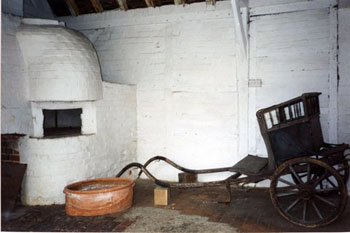 Other rooms upstairs house Regency period costumes, carefully preserved and displayed. I enjoyed viewing the muslin, floor length dresses with Empire waists and soft loose skirts in pale pinks, periwinkle blues and lilacs, such as Jane would have worn. At least she did not have to deal with the constraints of a tightly laced corset. Memorabilia of her two Royal Navy brothers, Frank and Charles, can be found in adjoining rooms.
Other rooms upstairs house Regency period costumes, carefully preserved and displayed. I enjoyed viewing the muslin, floor length dresses with Empire waists and soft loose skirts in pale pinks, periwinkle blues and lilacs, such as Jane would have worn. At least she did not have to deal with the constraints of a tightly laced corset. Memorabilia of her two Royal Navy brothers, Frank and Charles, can be found in adjoining rooms. Back in the cottage I chatted with the host and perused the comprehensive selection of Jane Austen books. Of course I could not resist purchasing a few (not that I needed to read anything else about J.A.) I also chose a few souvenirs and postcards before I bid Jane, the house and her memories goodbye. I walked across the street to Cassandra’s Tea Shop to meet my husband, who had downed three cups of tea, ate two pieces of lemon loaf and washed the bike while waiting for me. He asked how my visit was.
Back in the cottage I chatted with the host and perused the comprehensive selection of Jane Austen books. Of course I could not resist purchasing a few (not that I needed to read anything else about J.A.) I also chose a few souvenirs and postcards before I bid Jane, the house and her memories goodbye. I walked across the street to Cassandra’s Tea Shop to meet my husband, who had downed three cups of tea, ate two pieces of lemon loaf and washed the bike while waiting for me. He asked how my visit was.

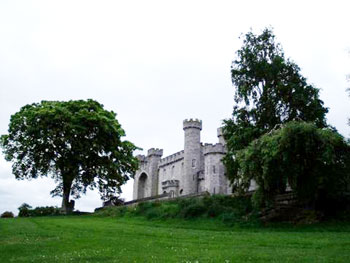 Even though Wales is famous for medieval castles, one such “mock” castle off the A55 motorway (a 30 minute drive from the Welsh border) is notable. It serves as an outpost for London’s National Portrait Galley: Bodelwyddan Castle. Bodelwyddan stands on land where property ownership purportedly goes back before the time of the Norman Conquest, and has recorded history dating from 1461, when the Humphreys family got this land as compensation for being booted off the Isle of Angelsey by Edward IV. From 1830-1850, the prominent Sir John Williams led the creating of an old time castle, including adding limestone walls, which actually were heated to protect the fruit orchards during cold weather.
Even though Wales is famous for medieval castles, one such “mock” castle off the A55 motorway (a 30 minute drive from the Welsh border) is notable. It serves as an outpost for London’s National Portrait Galley: Bodelwyddan Castle. Bodelwyddan stands on land where property ownership purportedly goes back before the time of the Norman Conquest, and has recorded history dating from 1461, when the Humphreys family got this land as compensation for being booted off the Isle of Angelsey by Edward IV. From 1830-1850, the prominent Sir John Williams led the creating of an old time castle, including adding limestone walls, which actually were heated to protect the fruit orchards during cold weather.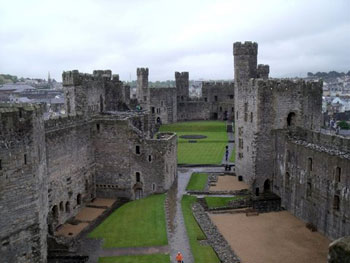 If you want to know just how hard life was for the common man back then, just visit a medieval fortress like Caernarfon Castle on a cold and rainy morning like I did. As I walked through its long passageways and explored the interior rooms whose walls are still intact some 700 years after being built, the chill and drafts went through my layered clothing to my bones. Much of the castle walls, both interior and exterior, remain intact from the time they were constructed between 1283-1330. After Edward I conquered Wales, he imagined a grand castle based on the dream of Roman emperor Magnus Maximus (whose body was found in the area). Maximus envisioned such a place located within a city amidst mountains and opposite an island (matching Caernarfon’s description), so James of Saint George was put in charge of building in this “dream city.”
If you want to know just how hard life was for the common man back then, just visit a medieval fortress like Caernarfon Castle on a cold and rainy morning like I did. As I walked through its long passageways and explored the interior rooms whose walls are still intact some 700 years after being built, the chill and drafts went through my layered clothing to my bones. Much of the castle walls, both interior and exterior, remain intact from the time they were constructed between 1283-1330. After Edward I conquered Wales, he imagined a grand castle based on the dream of Roman emperor Magnus Maximus (whose body was found in the area). Maximus envisioned such a place located within a city amidst mountains and opposite an island (matching Caernarfon’s description), so James of Saint George was put in charge of building in this “dream city.”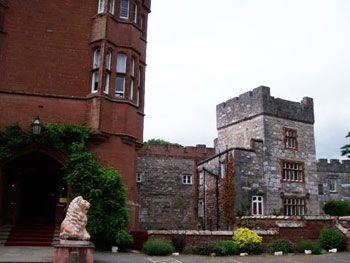 Caernarfon was once a motte and bailey castle (castle on a mound surrounded by a courtyard). This mound still resides within the courtyard as a dais made of Welsh slate, and was the scene of two Princes of Wales getting their official titles, that being Edward VIII in 1911 and then Prince Charles in 1969. The northeast tower has an extensive exhibit of those two investitures, including Charles’ BBC telecast. Charles immediately walked through the Queen’s Gate to greet his subjects, something which I got to do, as a special balcony still remains for photo opps.
Caernarfon was once a motte and bailey castle (castle on a mound surrounded by a courtyard). This mound still resides within the courtyard as a dais made of Welsh slate, and was the scene of two Princes of Wales getting their official titles, that being Edward VIII in 1911 and then Prince Charles in 1969. The northeast tower has an extensive exhibit of those two investitures, including Charles’ BBC telecast. Charles immediately walked through the Queen’s Gate to greet his subjects, something which I got to do, as a special balcony still remains for photo opps.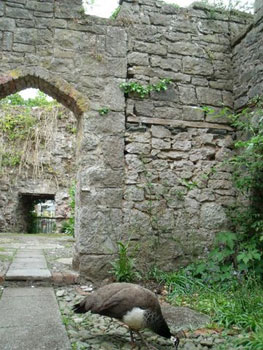 While the Vale of Clwyd is at the bottom of some incredible footpaths with steep angles going up hundreds of feet in the Clwydian Hills that’ll challenge any hiker, the town of Ruthin (an hour’s drive from Manchester) has a castle with the same namesake that’s located just above the base of the valley. It sits on grounds once allegedly housing a fort where King Arthur kept a little “love nest” for one of his mistresses dating before the Norman conquest, but it’s confirmed date for a standing edifice dates back to 1277, when Edward I secured it for his kingdom against the rebellious Welsh.
While the Vale of Clwyd is at the bottom of some incredible footpaths with steep angles going up hundreds of feet in the Clwydian Hills that’ll challenge any hiker, the town of Ruthin (an hour’s drive from Manchester) has a castle with the same namesake that’s located just above the base of the valley. It sits on grounds once allegedly housing a fort where King Arthur kept a little “love nest” for one of his mistresses dating before the Norman conquest, but it’s confirmed date for a standing edifice dates back to 1277, when Edward I secured it for his kingdom against the rebellious Welsh.
